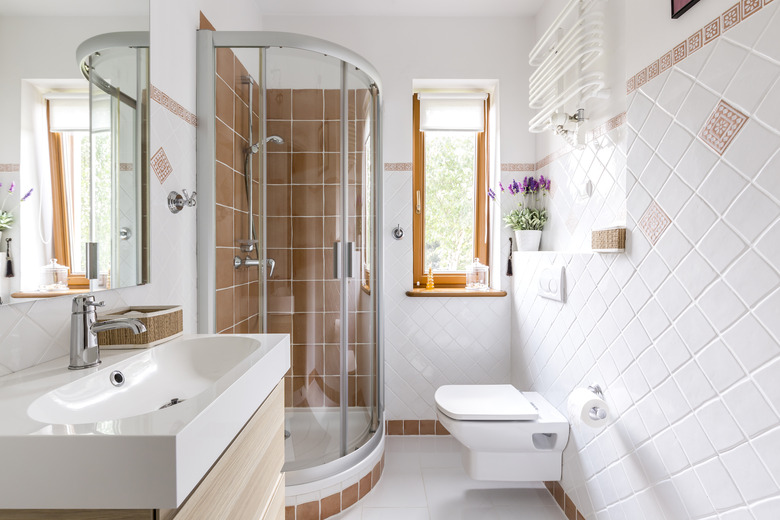How To Stop The Steam In A Bathroom After A Shower
We may receive a commission on purchases made from links.
The buildup of steam on the mirrors and hanging in the air when you step from a refreshing hot shower can be annoying. The steam, or condensation, is a natural byproduct of a shower. Left unchecked, condensation can lead to mildew and possibly cause respiratory issues. After a shower, there are a few ways to reduce steam that finds its way onto slick surfaces.
Causes of Condensation
Causes of Condensation
Knowing the cause of condensation can help you find the best solution for your steamed-up mirrors and windows. A drafty bathroom will have fewer issues with condensation than one that is insulated and well-built. Cracks in window frames and around doors allow the steam to escape and fresh air to flow in, reducing the need for dealing with condensation.
Condensation on the bathroom window occurs when warm air inside meets the colder air outside on a window and vice versa. Condensation in the air happens when the level of moisture in the air exceeds the dew point and forms minuscule droplets.
Bathrooms tend to have slick, cold surfaces, such as tile, mirrors, windows and countertops. When the warm moisture in the air comes in contact with the cold surface, tiny droplets can form rather quickly. The smaller the room, the more condensation can gather on the cold, smooth surfaces.
Consequences of Condensation
Consequences of Condensation
The dried droplets of moisture spread across the bathroom mirror are unsightly and a nuisance when primping after a shower. Additionally, condensation left unchecked can lead to big problems. Condensation can find its way into the nooks and crannies of a bathroom and create a nice, damp living space for mold and bacteria to call home.
Condensation can also collect under rugs and racks in the room and become a breeding ground for bacteria. Air out any soft surfaces in the bathroom regularly to keep bacteria at bay even if the steam problem has been resolved.
Stop the Steam From Showers
Stop the Steam From Showers
In truth, the steam that is created when hot water runs can't actually be stopped altogether. However, it can be significantly reduced. Consider the two major reasons steam is filling up the bathroom and fogging the mirrors and windows — air circulation and heat.
To increase air circulation in a well-insulated bathroom, crack a window. This will reduce the overall amount of water in the bathroom. Turn on the ventilation fan, if you have one, for 15 minutes or so to remove the lingering humidity from the room and stop steam from collecting in cracks and corners. A dehumidifier can remove condensation from the air quickly. Dehumidifying the bathroom is ideal for small spaces with big steam problems.
Add warmth to the room through a heated towel rack or a heated floor, if possible. Lay down rugs on tiled floors and air them out regularly to cut down on mildew finding its way into the fibers of the cushy bath mat. Go over the walls of the shower with a squeegee to remove the water that will continue to add moisture to the air long after you've bathed. Install double-paned windows, which act as a heat insulator and help to keep the temperature of the bathroom higher.
